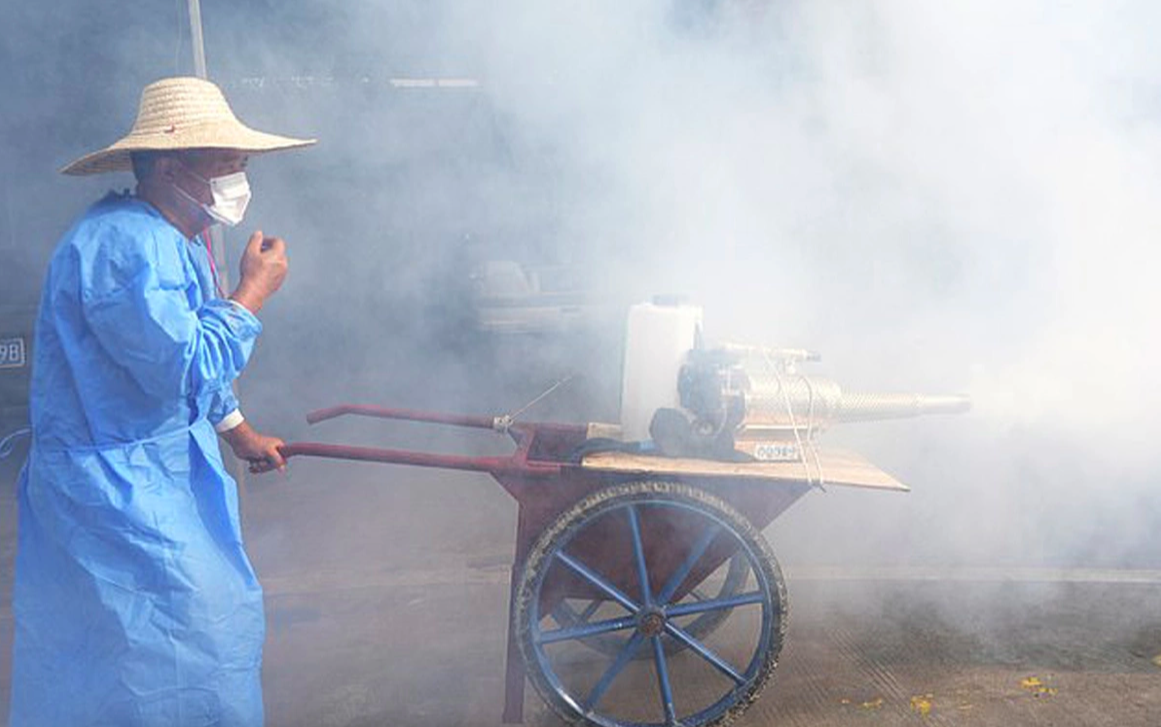Chikungunya is an infectious disease caused by the Chikungunya virus (CHIKV), transmitted by Aedes mosquitoes (the same type of striped mosquito that transmits dengue fever). The disease is currently breaking out in several Asian countries (China, Singapore, Thailand) and some islands in the Indian Ocean.
Vietnam has not yet recorded any cases, but there are potential risks. There is currently no vaccine or specific treatment for the disease, but health experts advise people not to panic and to take proactive preventive measures by eliminating mosquitoes.
On 12/8, Associate Professor Do Duy Cuong, Director of the Institute of Tropical Medicine, Bach Mai Hospital, said that the clinical manifestations of the disease are similar to dengue fever and some other viral diseases, such as sudden high fever (usually above 39 degrees Celsius), severe joint pain, muscle aches, headaches, nausea, rash, and swelling around the joints. Groups at higher risk of severe illness include newborns and adults with underlying medical conditions (high blood pressure, kidney disease, diabetes). If not treated promptly, the disease can become severe and even fatal.
Symptoms of Chikungunya usually appear 4-12 days after being bitten by an infected mosquito. Most signs typically resolve on their own within 2-7 days. The transmission period of the disease is about one day before the onset of fever and during the first 6 days of illness.
 |
People in China implement isolation and preventive measures against the Chikungunya virus. Photo: VCG |
People in China implement isolation and preventive measures against the Chikungunya virus. Photo: VCG
Chikungunya was first recorded in 1952 in southern Tanzania, Africa. The name "Chikungunya" comes from the local language, meaning "that which bends up" due to the severe joint pain that causes sufferers to bend over when moving. The current trend of outbreaks and spread of the disease may be due to environmental and weather changes that promote mosquito development.
Methods for definitively diagnosing Chikungunya include: ELISA tests to detect IgM/IgG antibodies or viral antigens. PCR (Polymerase Chain Reaction) and real-time PCR tests to detect the genetic material of the Chikungunya virus. Currently, some testing facilities, such as Bach Mai Hospital, offer PCR testing for diagnosis.
According to the latest recommendations from the Ministry of Health, people returning from countries and regions experiencing an increase in Chikungunya cases should actively monitor their health for 12 days. If they experience fever, muscle, or joint pain, they should seek medical attention. People in households and residential areas should implement measures to kill mosquito larvae and pupae, eliminate mosquitoes, and maintain environmental hygiene by removing potential mosquito breeding grounds. Using mosquito nets while sleeping and applying mosquito repellent are also recommended.
People should not self-diagnose or self-treat at home. If they experience suspected symptoms such as fever, joint pain, or rash, they should immediately go to the nearest medical facility for consultation, examination, and prompt treatment.
Le Nga












